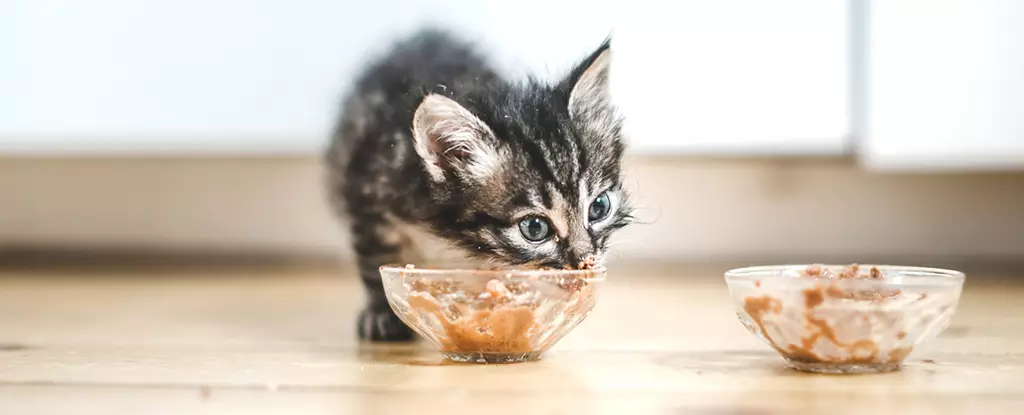The recent outbreak of H5N1 bird flu among domestic cats in Los Angeles County has raised significant alarm among pet owners and health officials alike. The circumstances surrounding this troubling situation emphasize the ongoing dangers of avian influenza and the unexpected consequences of feeding pets raw diets. This article explores the implications of these unfortunate incidents, the necessary precautions to take, and how to safeguard the health of our feline companions.
At least six cats in Los Angeles County have tragically succumbed to the H5N1 virus after consuming raw pet food and raw milk contaminated with the virus. A particularly heartbreaking case involved a family of five cats, two of which lost their lives after consuming commercially available raw food products. These cats lived exclusively indoors, indicating that their diet was the primary route for the virus’s entrance into their system. Reports from the Los Angeles County Department of Public Health (LACDPH) detailed that four of the five cats demonstrated severe health issues following the consumption of the tainted food, with only one showing mild symptoms. In desperate attempts to ensure humane treatment, veterinarians recommended euthanasia for some of the severely affected cats, revealing the devastating impact of this outbreak on both pets and their owners.
The brand ‘Monarch Raw Pet Food,’ sold at farmers markets, has been confirmed to contain the live H5N1 virus, prompting urgent advisories for consumers to dispose of any products from this line. This alarming discovery stresses the importance of scrutinizing raw pet food purchases and highlights the potential health risks associated with such diets. With additional cases arising from other urban households, it suggests a broader issue that requires immediate attention.
The investigation into these occurrences has revealed that another indoor cat also displayed acute illness after ingestion of raw food, with testing confirming the presence of H5N1. This situation is particularly critical as it reflects how quickly the virus can spread within localized environments, even in pets typically kept indoors. The symptoms displayed by infected cats vary, with severe respiratory issues being prominent among the cases, further complicating the diagnostic landscape for veterinarians.
Interestingly, while cats can contract avian influenza, they rarely test positive for Influenza A, making these cases exceedingly rare. However, as these incidents are the first confirmed cases of H5N1 in cats among the county, they underscore the urgent need for awareness and vigilance. The LACDPH has assured the public that, at this juncture, there is no indication of local transmission between cats, humans, or from cats to humans, suggesting that current risks remain low. Nevertheless, understanding the symptoms of H5N1 infection—such as severe lethargy, loss of appetite, fever, and notable respiratory distress—remains essential for pet owners.
The occurrence of H5N1 in domestic pets is alarming, not only for the immediate concern of pet health but for the broader implications on public health. The virus typically resides in avian populations but has been seen spreading to other animals globally, including cattle. With 66 human infections reported in the United States, one leading to a fatality, health officials are understandably on high alert.
This surge in avian influenza cases across species heightens potential risks for human exposure, particularly to those interacting closely with infected animals. The LACDPH emphasizes that the general public’s risk remains low, but this does not negate the necessity for caution. People coming into contact with specific sources—such as wild birds, chicken farms, or infected raw food—must be particularly vigilant about hygiene practices and handling methods.
Precautionary Measures for Pet Owners
In light of these recent events, pet owners must take several proactive measures to protect their feline friends from potential exposure to H5N1 and other harmful pathogens. First, it’s crucial to avoid raw diets, which present multiple health risks beyond bird flu. Staying current on food recalls through resources like the FDA’s Recalls, Market Withdrawals, & Safety Alerts can inform better purchasing decisions and promote community safety.
Furthermore, pet owners should be educated about the symptoms indicative of avian influenza and continually assess their pets’ health, especially if they have been potentially exposed to raw food or outdoor wildlife. If illness is suspected, timely veterinary consultation is critical to ensure rapid intervention and treatment.
As the situation surrounding H5N1 in domestic cats evolves, it underscores the importance of informed pet ownership and responsible feeding practices. The distressing cases in Los Angeles County serve as a stark reminder of nature’s unpredictability and the responsibilities we hold for the health of our pets. By remaining vigilant, educated, and proactive, we can work towards mitigating the risks posed by this formidable virus and ensure a safer environment for both pets and their owners.


Leave a Reply